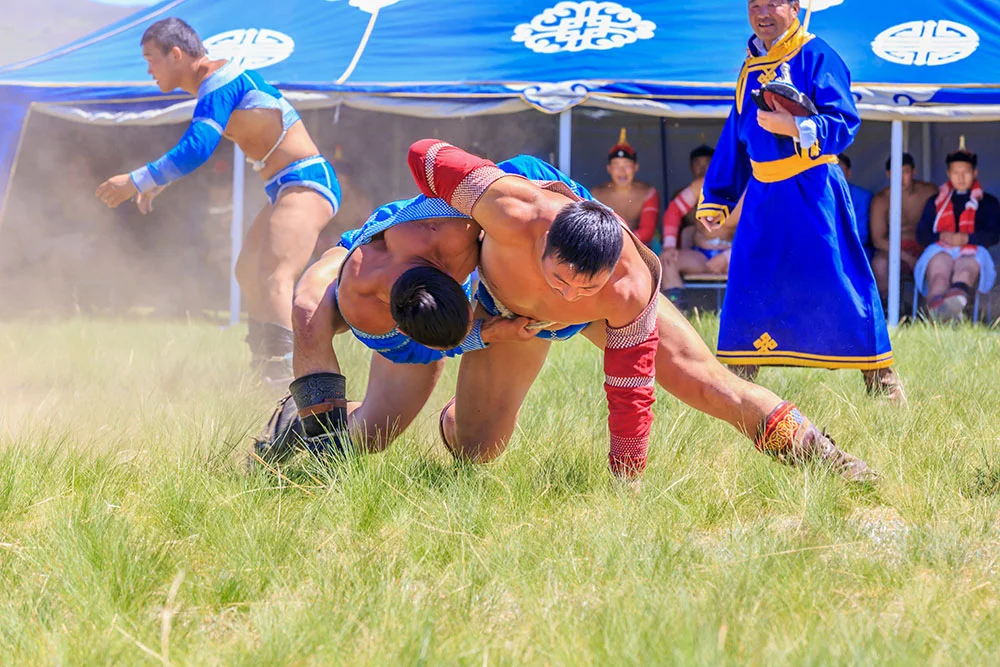Following the traditions and customs in the ideological, symbolic, spiritual and cultural aspects, and thus preserving the cultural identity of the Mongolians, the Naadam festival and the Tsagaan Sar holiday have been celebrated for millennia.
Naadam festival
From ancient times, the Mongolians joyfully celebrated Naadam in the occasion of the great assembly of chiefs, coronation, during state ceremonies, rituals of worshiping and respecting nature, or even before going to war. Only on this festive day, the nine-legged Great White Flag, the symbol of Mongolian statehood, leaves the Government Palace and is solemnly raised on the festival square.
Naadam is a celebration of the sovereignty, unity of the nation and cultural identity.

The “Three Manly Games” are held including competitions in archery, national wrestling, and horse racing, as well as a team game of traditional dice.
The national wrestling is not only a competition of strength and aptitude, but also the embodiment of the spirit of victory and defeat. A losing wrestler, in recognition of defeat, unties the “zodog” knot (the upper part of the suit) and passes under the winner’s right hand, honoring the opponent’s victory. The winner performs the Garuda bird dance around the national flag to show his victory. Archery develops concentration skills, requires patience and stamina. And horse racing is a grandiose spectacle that has no analogues in the world. Mongolian horses can gallop up to 30 kilometers, demonstrating their temper and endurance. The winning horses and their riders are honored, the victorious wrestlers and archers are awarded traditional titles and awards.
During the festival, people dress up in traditional clothes and jewelry that reflect the rich traditions of Mongolian costume and always cheer the holiday atmosphere.
The main of Mongolian festivals and cultural quintessence, Naadam, was included in the UNESCO Intangible Cultural Heritage of Humanity list in 2010.
Lunar New Year – Tsagaan sar
From ancient times, it was celebrated in autumn as a holiday of harvest and abundance, but by the 1206 decree of Genghis khan its celebration was moved to early spring. In the 17th century it also became a Buddhist religious holiday. Therefore, this holiday today has a deep spiritual and symbolic meaning of nomadic ideology and religion preserving its connection with ancient customs, and enjoys the state status.
This is a unique holiday when people gather and show respect to each other. On the eve, all family members gather, treat themselves to dishes and national drinks, and play games. Before sunrise on the first New Year’s day, all family members get up early to greet the rising sun, worship the mountains and offer white milk to the nature.
Then they gather at the elders in the family and greet them, supporting elbows of older relatives, but this is not allowed for spouses. After such greetings, people exchange blessings, gifts, treats and, of course, meaningful and joyful conversation. Today, through such celebration, the Mongolians continue their history, traditions and cultural immunity. This is what gives a sense of national unity, feeling of spiritual connection and handover to the future generations.


